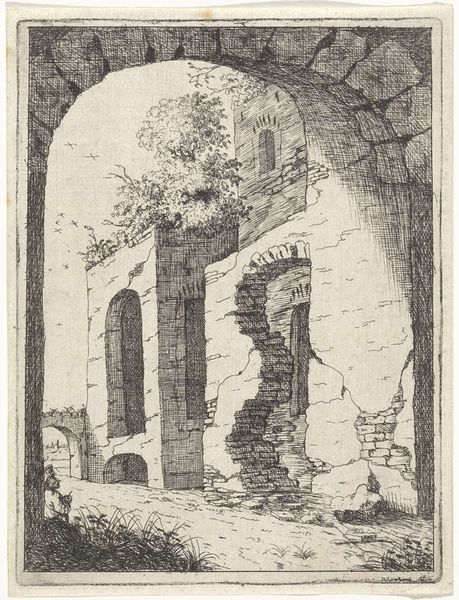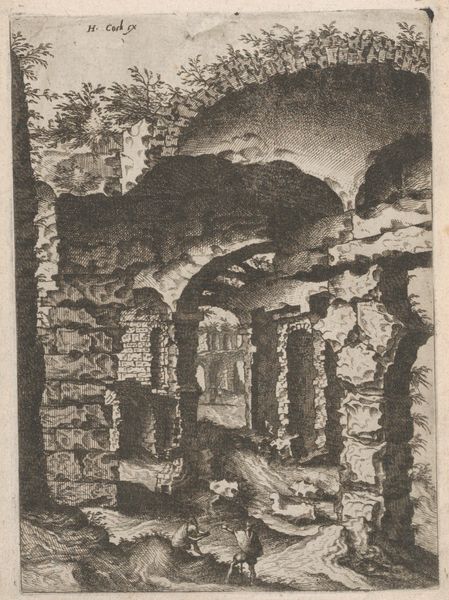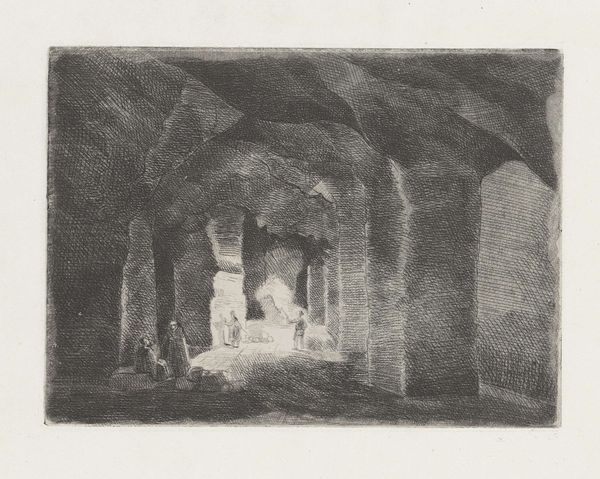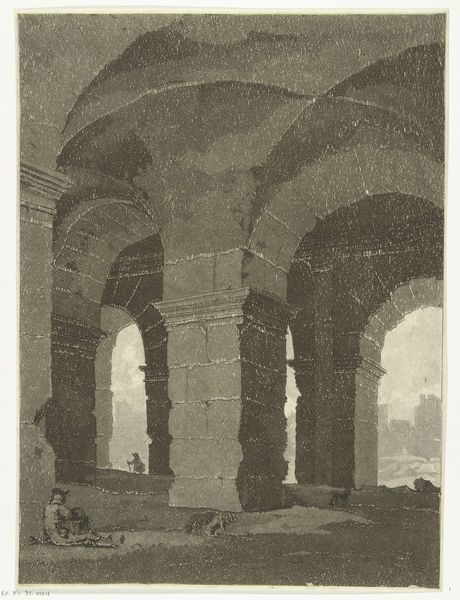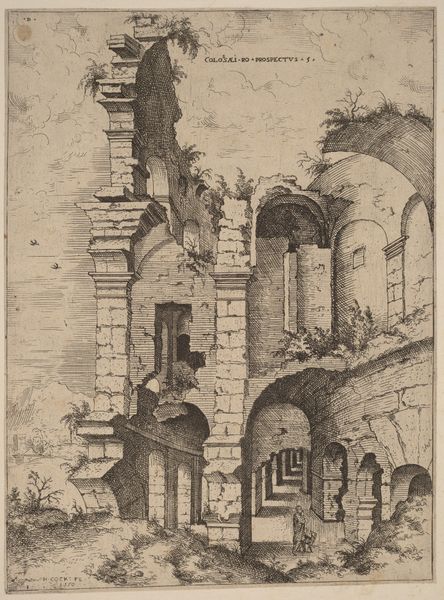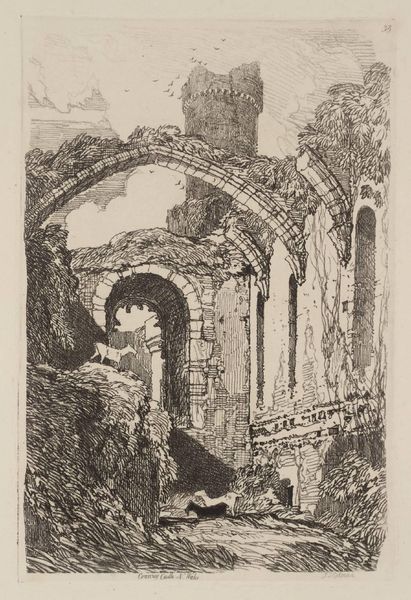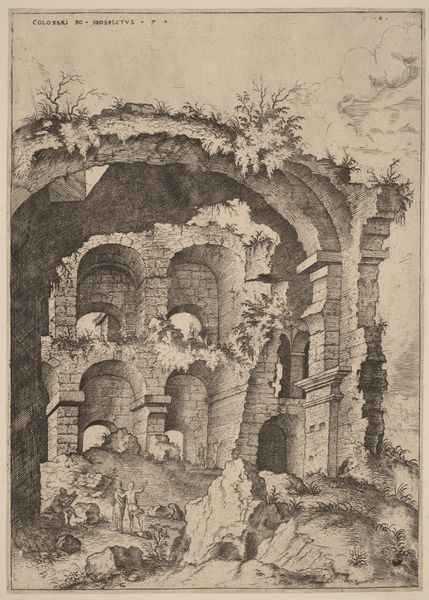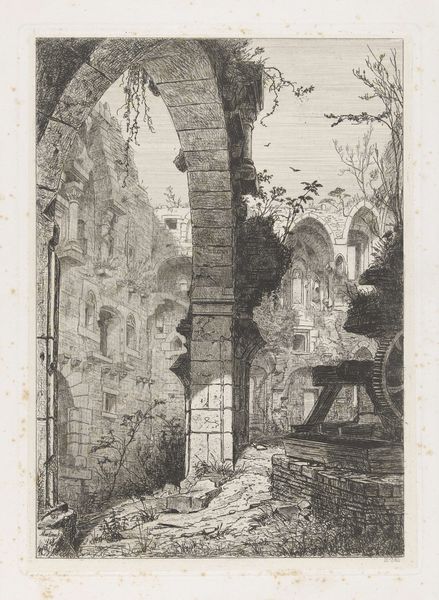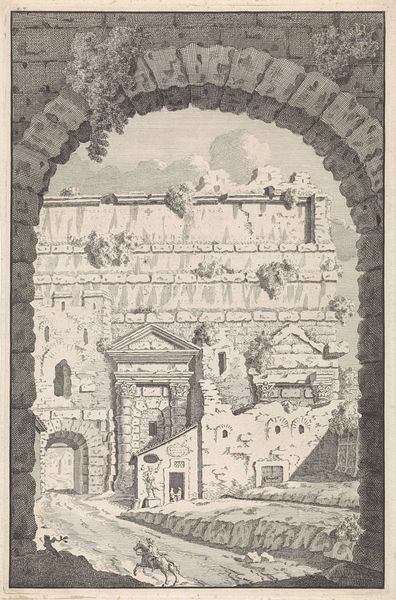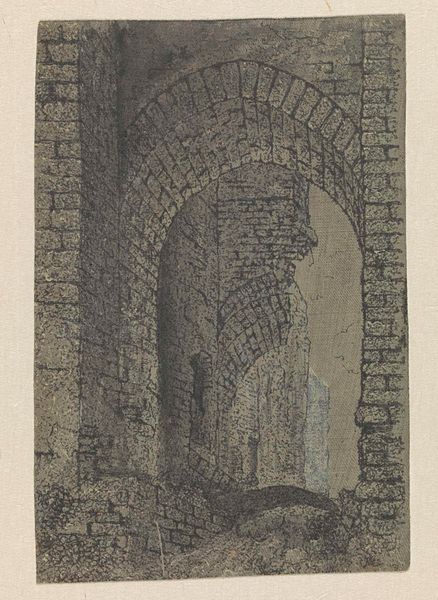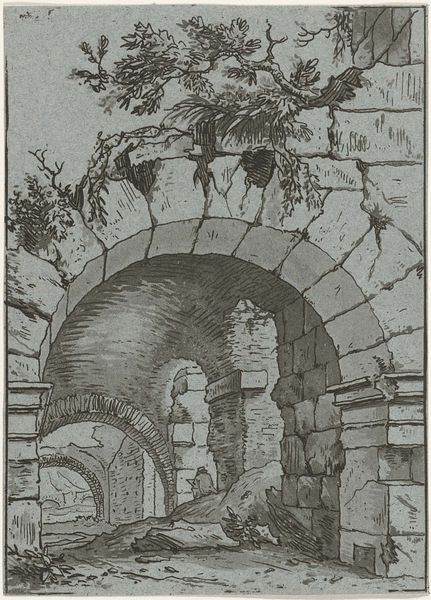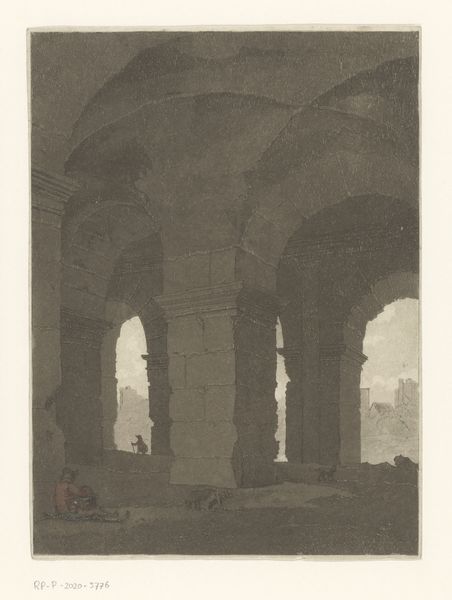
#
pencil drawn
#
photo of handprinted image
#
light pencil work
#
pencil sketch
#
old engraving style
#
charcoal drawing
#
carved into stone
#
pencil drawing
#
pencil work
#
tonal art
Dimensions: height 400 mm, width 264 mm
Copyright: Rijks Museum: Open Domain
Editor: Here we have Bonaventura van Overbeek’s etching, "Musicerende herder tussen ruïnes," from 1708. It feels quite melancholic to me; the sharp contrasts between light and shadow really emphasize the ruinous setting. How do you interpret this work? Curator: I see this etching as deeply engaged with the politics of ruins and representation. The scene depicts a pastoral scene *within* decaying architecture. This contrast highlights the power of nature reclaiming what was once a symbol of human power, possibly a critique of empires and their impermanence. Editor: That's a fascinating point. So, the choice of a pastoral scene isn't just aesthetic? Curator: Exactly. Placing these figures here frames them – and the viewer – within a historical narrative. The ruin itself becomes a stage for examining shifting power dynamics and perhaps even reflects on Dutch societal changes or anxieties during that period. Do you notice the meticulous detail in rendering the crumbling stone versus the smoother depiction of the figures? Editor: Yes! The texture of the ruins is so pronounced, it almost feels… deliberate, contrasting with the figures who seem secondary. Curator: Precisely. It raises questions about what the artist is truly interested in foregrounding. Is it the human experience, or is it a statement about the grand sweep of history and the inevitable decline of human achievements? Perhaps even a visual reminder of mortality? Editor: Wow, I hadn't considered that. I was initially drawn to the romantic, slightly somber atmosphere, but your insights on the political and social context really deepened my understanding. Curator: These "pastoral" scenes amongst ruins became quite fashionable, and the reasons behind the popularity of such themes is always more complex than simple artistic whim. Exploring this adds new dimensions to appreciating art!
Comments
No comments
Be the first to comment and join the conversation on the ultimate creative platform.

